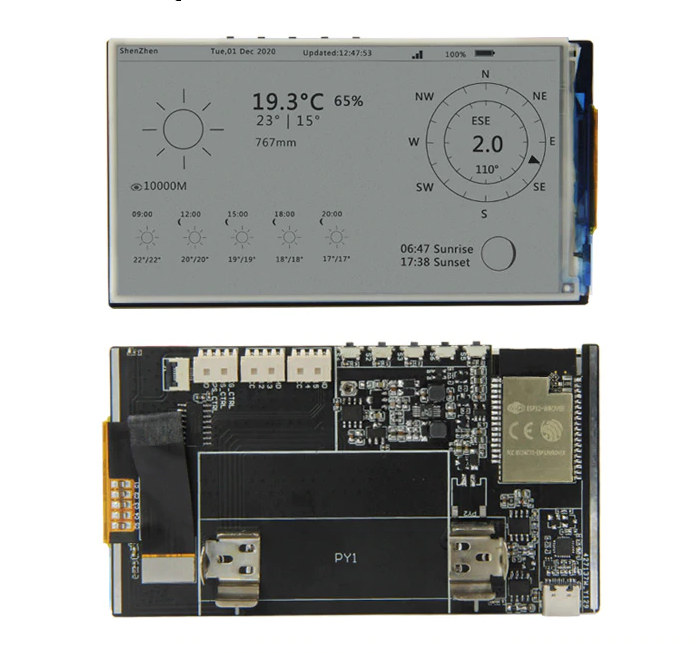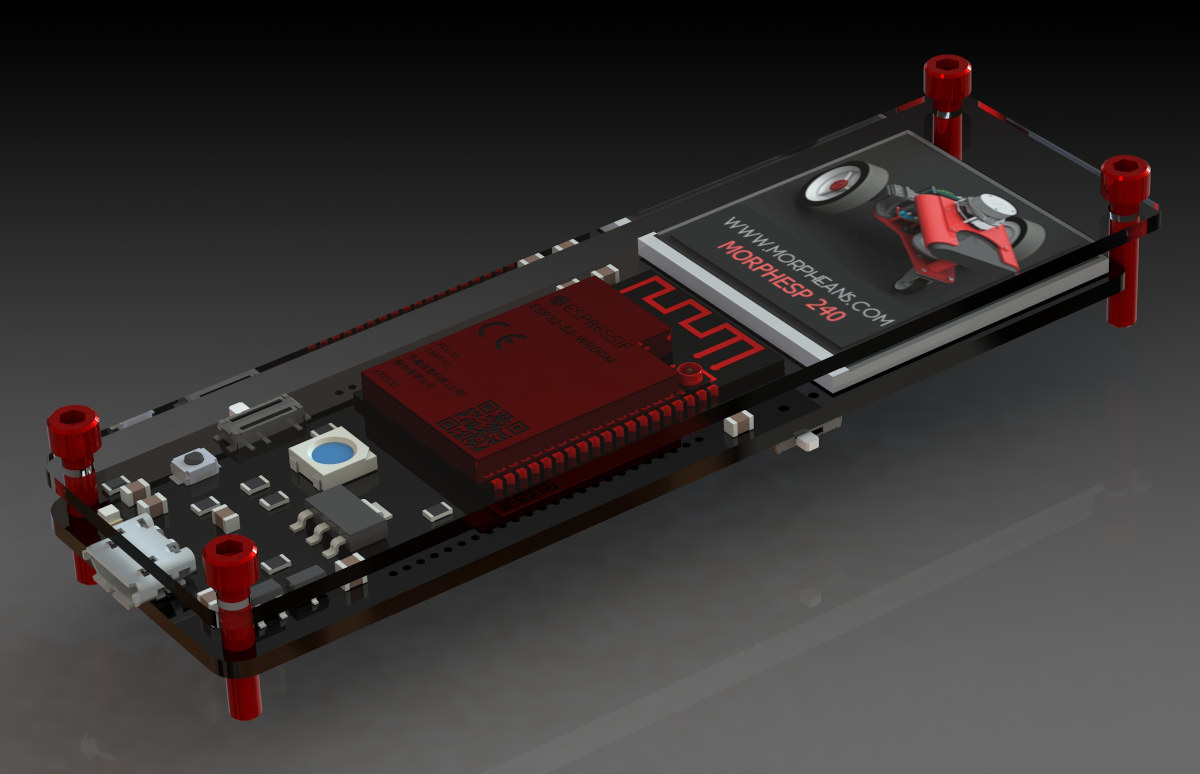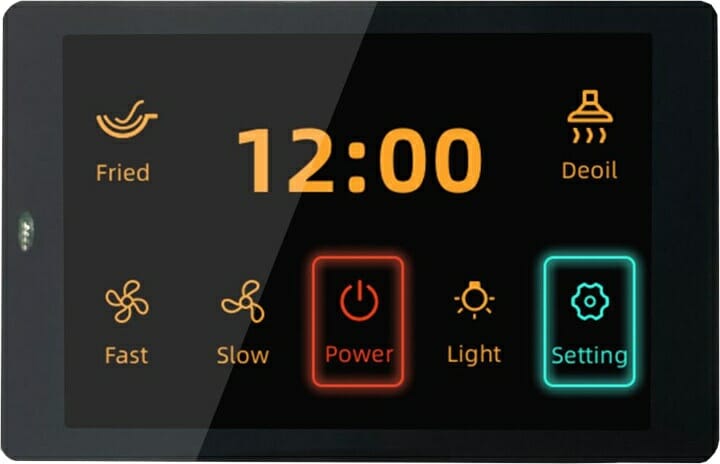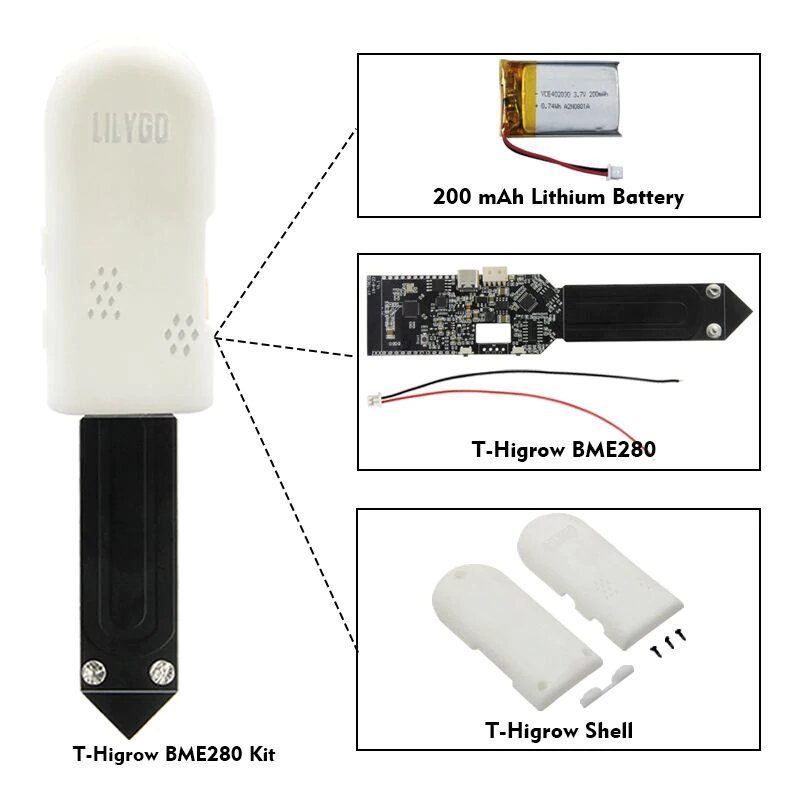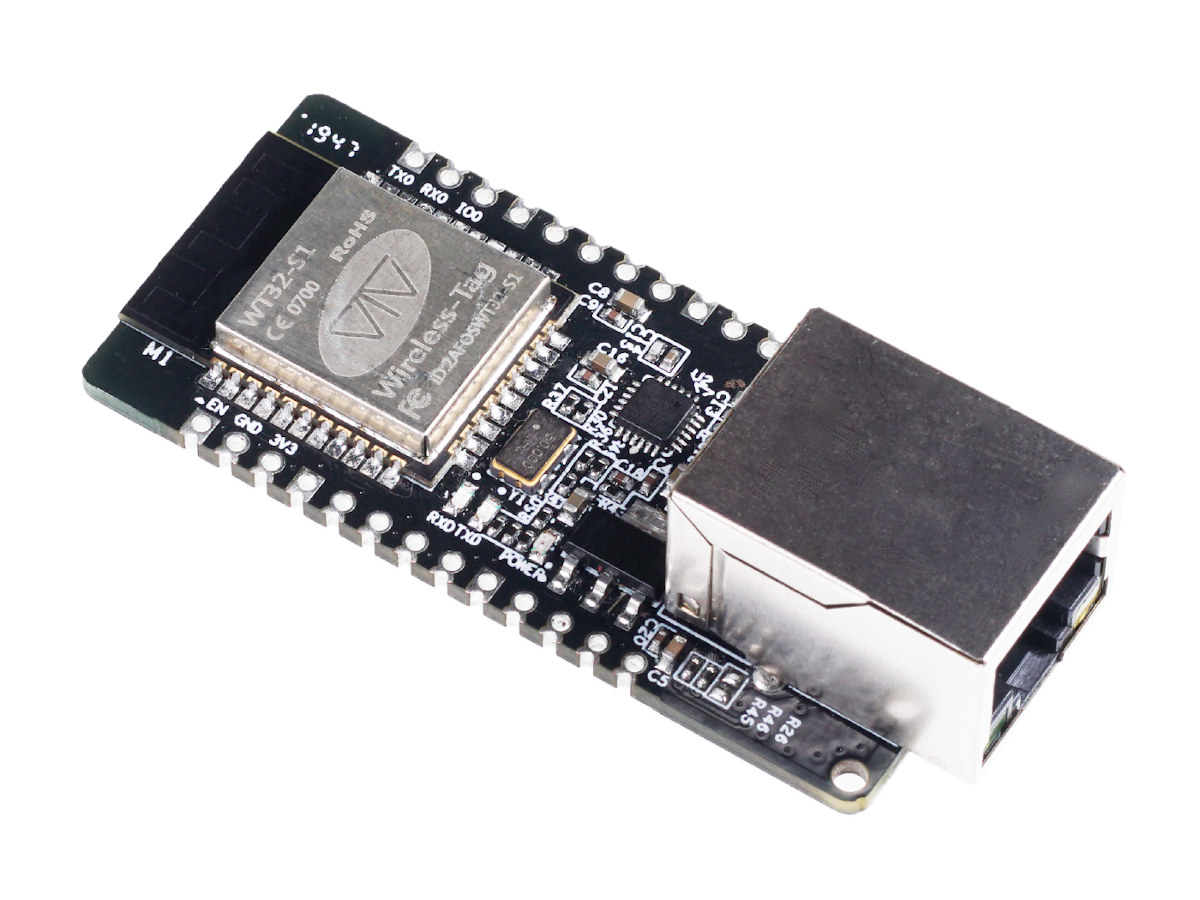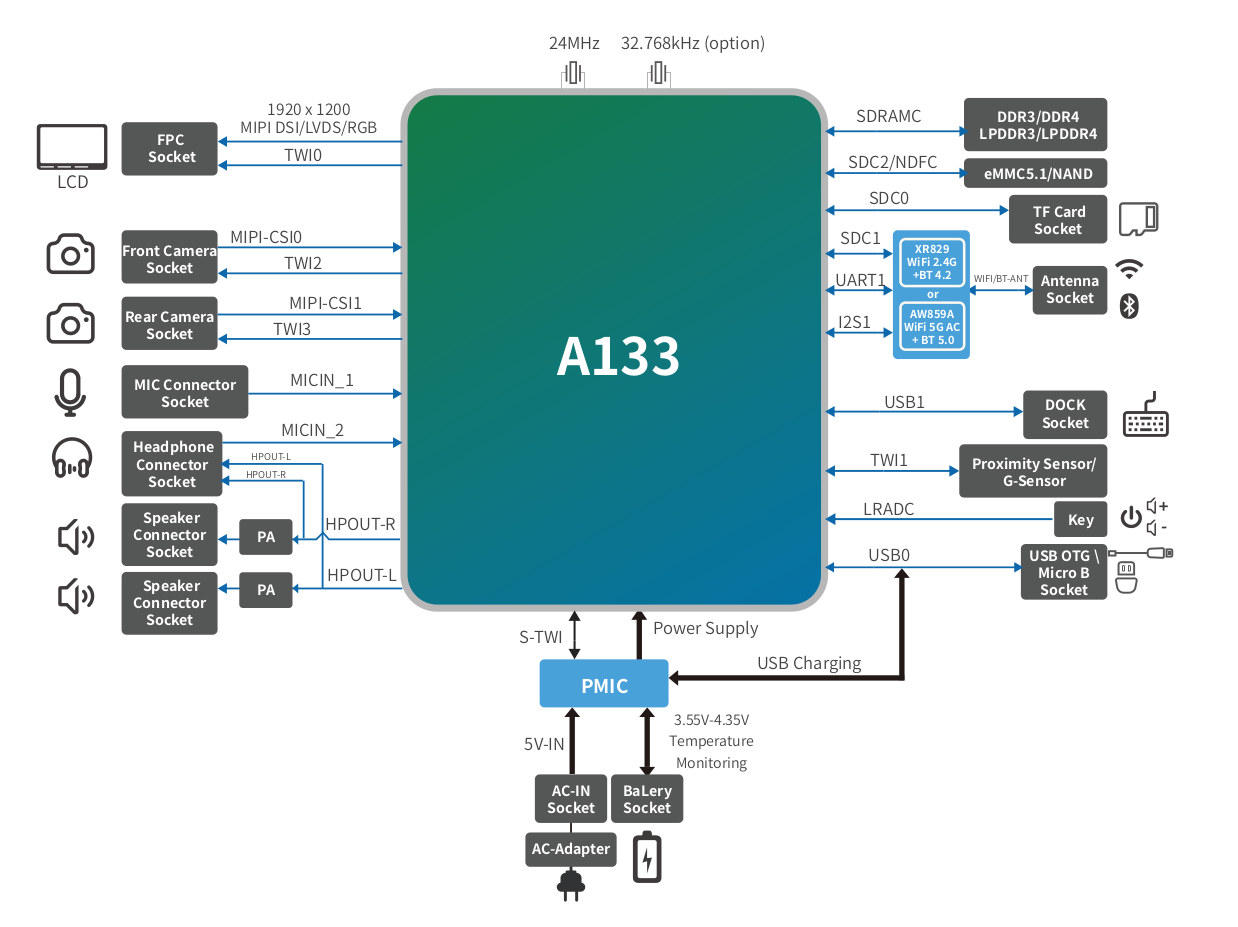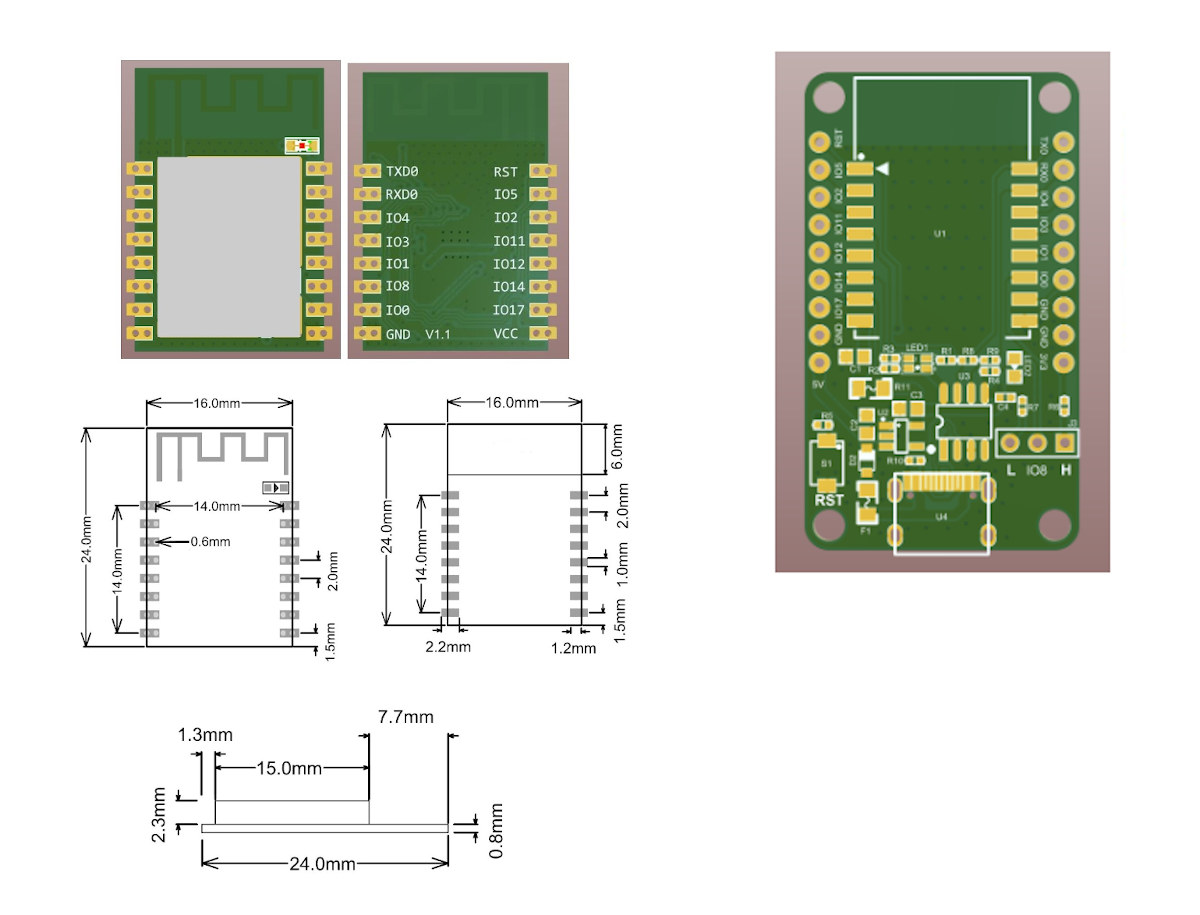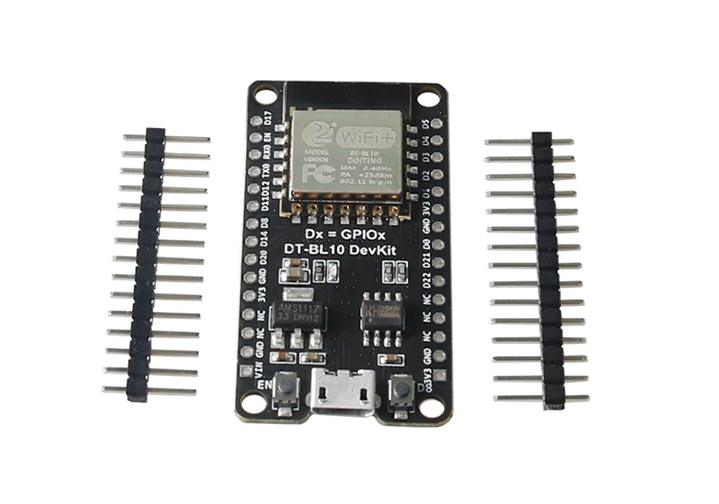We’ve very recently covered M5paper IoT development kit based on ESP32 WiSoC, and equipped with a 4.7-inch touchscreen e-Ink display together with a 1,150mAh battery all nicely packed into an enclosure. It looks great, but costs $69, so if you’d like to integrate this type of ESP32 connected display into your own project at a lower cost, you may be interested in TTGO T5 4.7-inch e-Paper display with 16 gray levels fitted with an ESP32-WROVER-E module with 16MB flash, and 8MB PSRAM. TTGO T5 key features and specifications: Display 4.7-inch ePaper display with 960×540 resolution, 16 gray levels , partial refresh support 6-pin FPC touchscreen connector Wireless module – ESP32-WROVER-E with ESP32-D0WDQ6 V3 dual-core processor, 16MB flash, 8MB PSRAM USB – 1x USB-C port Expansion – 4-pin connector with GPIOs, GND, 3.3V Misc – 1x reset button, 4x user buttons Debugging – USB-C port connected to USB to TTL CP2104 […]
MorphESP 240 ESP32-S2 board integrates a 1.3-inch color display (Crowdfunding)
We’ve already seen ESP32 platforms with a color display such as M5Stack, but MorphESP 240 is kind of cute with a 1.3-inch color display, features the more recent ESP32-S2 WiFi processor, and supports battery power & charging. MorphESP 240 specifications: Wireless Module – ESP32-S2-WROOM with Espressif Systems ESP32-S2 single-core 32-bit Xtensa LX7 microprocessor up to 240 MHz with 128 KB ROM, 320 KB SRAM, 16 KB SRAM in RTC, 4MB SPI flash, 802.11 b/g/n 2.4 GHz Wi-Fi connectivity Display – Onboard 1.3-inch ST7789 display with 240 x 240 resolution, connected over SPI USB – 1x Micro USB port for power/charging and programming Expansion – 16-pin and 24-pin headers with GPIO, I2C, UART, SPI, USB, and power signals Misc – WS2812B RGB LED connected to IO16, Reset button, boot mode switch, battery on/off switch Power Supply 5 V to 3.3 V regulator to feed additional modules JST connector for a battery […]
WT32-SC01 is a thin 3.5-inch ESP32 color touchscreen display
Looking for an ESP32 board with a color touchscreen display? There is plenty of choices here, including Espressif Systems own ESP32-S2-Kaluga-1 multimedia devkit with a 3.2-inch display or M5Stack Core2 with a 2-inch display. But if you’d like a thinner and larger display, Tag Wireless WT32-SC01 is an ESP32-powered 3.5-inch color display with a 2-point capacitive touchscreen designed to be integrated into your own project or product. WT32-SC01 WiFi display specifications: Wireless Module – ESP32-WROVER-B module based on ESP32-D0WD dual-core processor up to 240 Mhz with 4MB SPI flash, 8MB PSRAM, 2.4GHz WiFi 802.11 b/g/n up to 150 Mbps, and Bluetooth 4.2 LE Display – 3.5-inch 480×320 display (SPI) with 2-pin capacitive touchscreen (I2C) Expansion – 2x 40-pin I/O pads with GPIO, I2C, VN/VP, I2S, UART, 5V, 3.3V, GND Misc – Reset button (6), power and UART LEDs Power Supply – 5V/1A via USB type-C port for display only, or […]
TTGO T-Higrow is a WiFi & Bluetooth connected soil temperature & moisture sensor
LilyGO has made plenty of ESP32 “TTGO” boards with various features be it PoE, battery support, OLED display, cellular connectivity, and even a devkit in watch form factor. The latest product from the company specifically targets smart farming/gardening as TTGO T-Higrow embeds either DHT11 temperature and humidity sensor or BME280 temperature, humidity, and barometric sensor to report soil temperature and moisture over Bluetooth or WiFi. It can also come as a kit with a battery and a 3D printed enclosure. TTGO T-Higrow board specifications: SoC – Espressif Systems ESP32 dual-core LX6 processor @ up to 240 MHz with 520 LB SRAM, Wi-Fi & Bluetooth Storage – 4MB QSPI flash Wireless 2.4 GHz 802.11b/g/n WiFi 4 up to 150 Mbps Bluetooth 4.2 BR/EDR and BLE Sensors Option 1 – DHT11 temperature and humidity sensor Option 2 – BME280 temperature, humidity, and barometric sensor Expansion – 2x 12-pin through holes with UART, […]
$6 WT32-ETH01 is a Tiny ESP32 board with Ethernet
Espressif Systems ESP32 processor supports WiFi, Bluetooth, and Ethernet connectivity. There are only a few boards coming with an Ethernet RJ45 jack out of the box including esp32MX-E ESP32 board, TTGO T-Internet-POE, and Olimex ESP32-Gateway board among others. Those boards are fine, but they sell for $16 and up, so if you’d like a cheaper and tinier ESP32 board with Ethernet, Wireless Tag WT32-ETH01 may be an option for projects not requiring PoE support. WT32-ETH01 board specifications: Wireless Module – Wireless Tag WT32-S1 based on ESP32 dual-core WiSoC with 4MB flash, on-board antenna Connectivity 10/100M Ethernet via LAN8720A transceiver 2.4 GHz 802.11b/g/n WiFi 4 up to 150 Mbps Bluetooth 4.2 BR/EDR and LE Expansion – 2x 13 through holes and castellated holes with GPIOs, I2C, SPI, 2x UART, EN, LINK, 5V, 3.3V, and GND signals Power Supply – 3.3V or 5.5V via headers, minimum 500 mA; typical operating current: 80 […]
Allwinner A133 tablet processor pairs with XR829 or AW859A WiFi & Bluetooth chip
Last year, Allwinner published an updated roadmap for tablet processors that included A100, A200, and A300 SoC’s. None of those have been launched yet, but I’ve just noticed the Allwinner A133 quad-core Cortex-A53 processor showed up on the company’s website. That’s yet another entry-level processor coupled with a PowerVR GE8300 GPU, but you’d get support for Android 10, instead of the older Android 7.1/8.1 SDK provided for the earlier Allwinner A-series tablet processors. This time around, the company also pairs A133 processor with its own wireless chips, either XR829 WiFI 4 and Bluetooth 4.2 chip, or AW859A dual-band 802.11ac WiFi 5 and Bluetooth 5 chip. Allwinner A133 specifications: CPU – Quad-core Arm Cortex-A53 @ 1.6GHz with 32KB L1 I-cache + 32KB L1 D-cache per core, 512KB L2 cache, and CoolFlex power management architecture GPU – Imagination PowerVR GE8300 with support for OpenGL ES3.2, Vulkan 1.1, OpenCL 1.2 Memory I/F – […]
The quest for a blob-free WiFi & Bluetooth stack for BL602 WiSoC
I thought I was done writing about Bouffalo Lab BL602 WiFI & Bluetooth RISC-V SoC for a while after first covering the chip itself, and then an inexpensive BL602 development board this weekend. But the BL602 SDK has shown up in various Github repositories, including Bouffalo Lab’s own bl_iot_sdk repository, and as more people are looking into it, there’s now an effort to develop a fully open-source blob-free WiFi & Bluetooth stack for BL602, and other Bouffalo Lab WiFi and/or Bluetooth wireless chips. Last day we communicate with Bouffalolab, finally they release the SDK of BL602 (RV32 chip of wifi+bt), all code is open, except libblecontroller.a, libatcmd.a, libbl602_wifi.a (while they have all symbol inside)https://t.co/giHsQ4ezXxwe have a fork too https://t.co/FiaAIxLBc8 — Sipeed (@SipeedIO) October 27, 2020 First, Sipeed says the code is mostly open-source except for three libraries: ibblecontroller.a, libatcmd.a, libbl602_wifi.a, all of which are un-obfuscated, and easy to disassemble. Then […]
BL602 IoT SDK and $5 DT-BL10 WiFi & BLE RISC-V development board
Yesterday, we wrote about Bouffalo BL602 32-bit RISC-V WiFI and Bluetooth LE wireless SoC that should eventually compete with ESP8266 in terms of price but with more features, higher performance. and more resources like memory and storage. At the time, I noted I could not find any tools for the processor, but I was informed a BL602 SDK (Doiting_BL) and documentation had already been released on Github. The basic readme and a user manual are already available in English, but the main documentation is still in Chinese with various examples to configure GPIO, YART, WiFi, and Bluetooth. You’ll find the documentation in Github, as I could not find a website yet:
|
1 |
git clone https://github.com/SmartArduino/Doiting_BL |
Go to Doiting_BL/docs/html folder and then open index.html in your browser to access the documentation. The SDK works both in Windows and Linux and relies on either Eclipse & OpenOCD or Freedom Studio & OpenOCD. A graphical software […]


